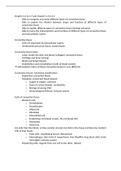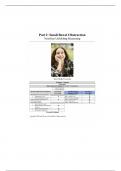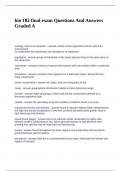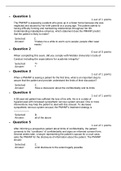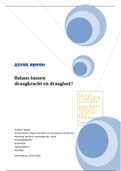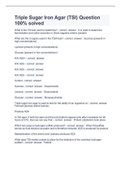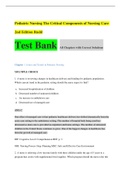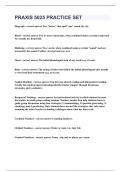College aantekeningen
Notes Lecture Connective Tissue
- Instelling
- Vrije Universiteit Amsterdam (VU)
This document contains the lecture notes I took during the lecture on connective tissue during the Cell Biology-Histology course in the first year of Biomedical Sciences at the VU. Other lecture notes and summaries are available on my profile. I finished the Histology exam with a 7.3.
[Meer zien]
